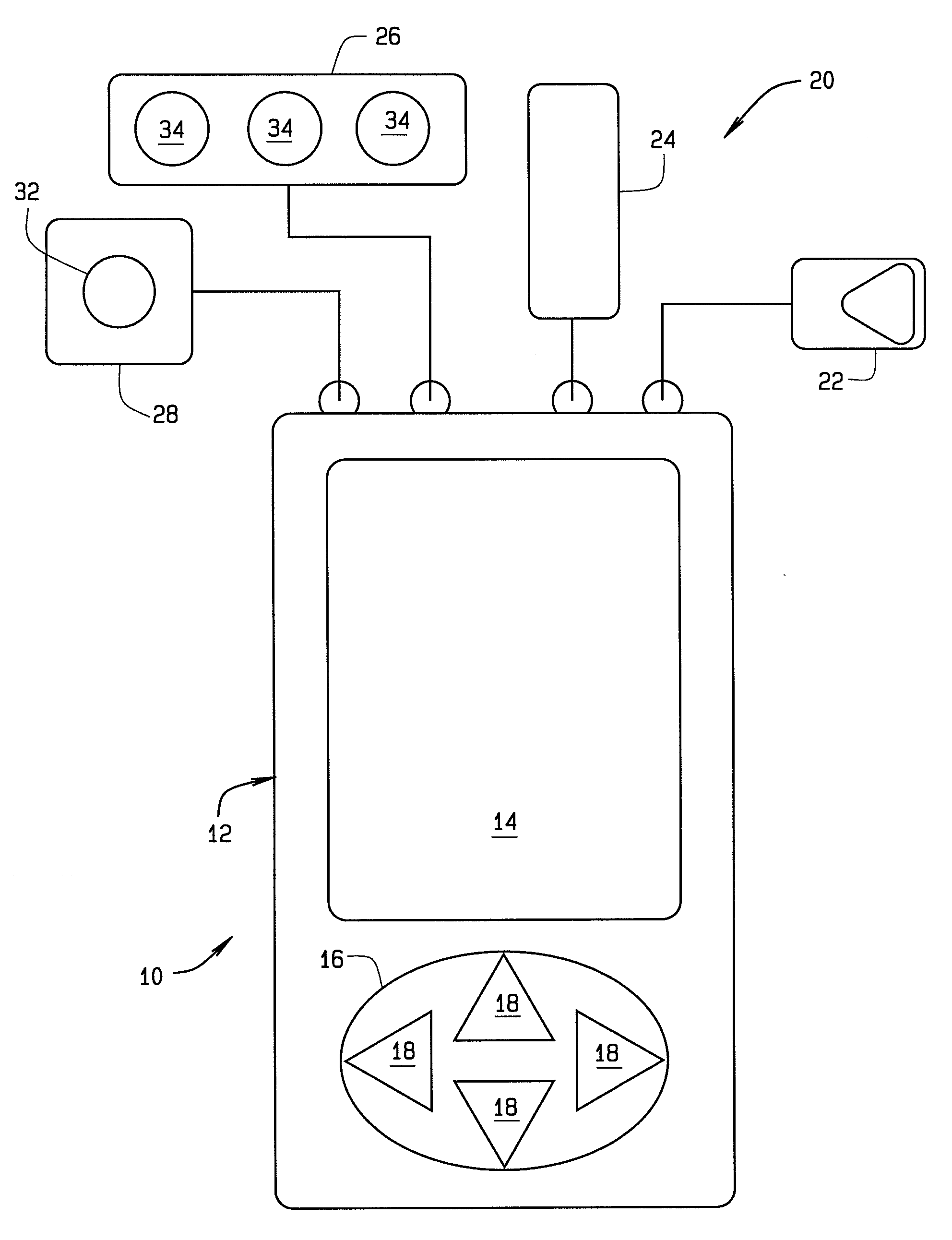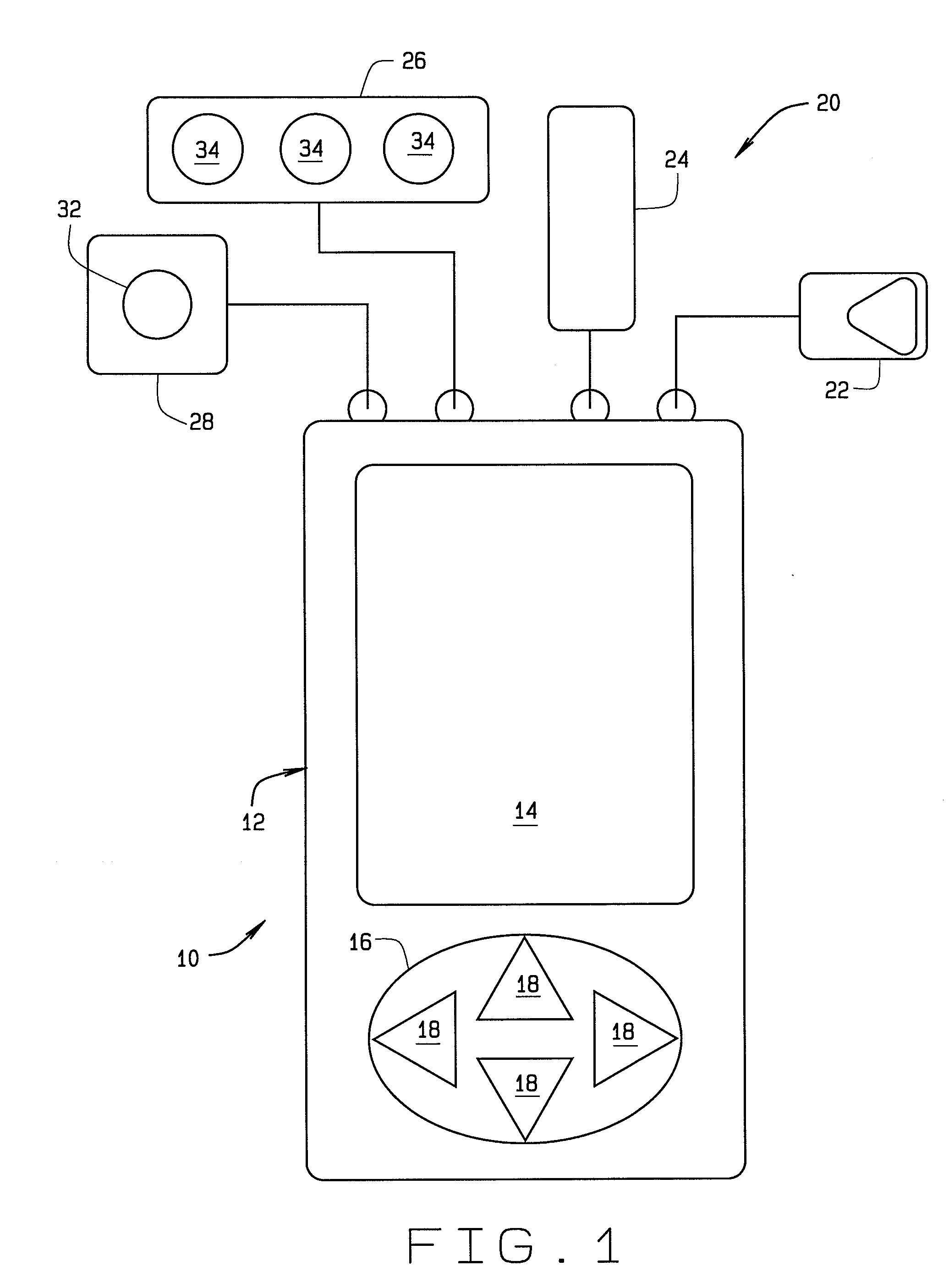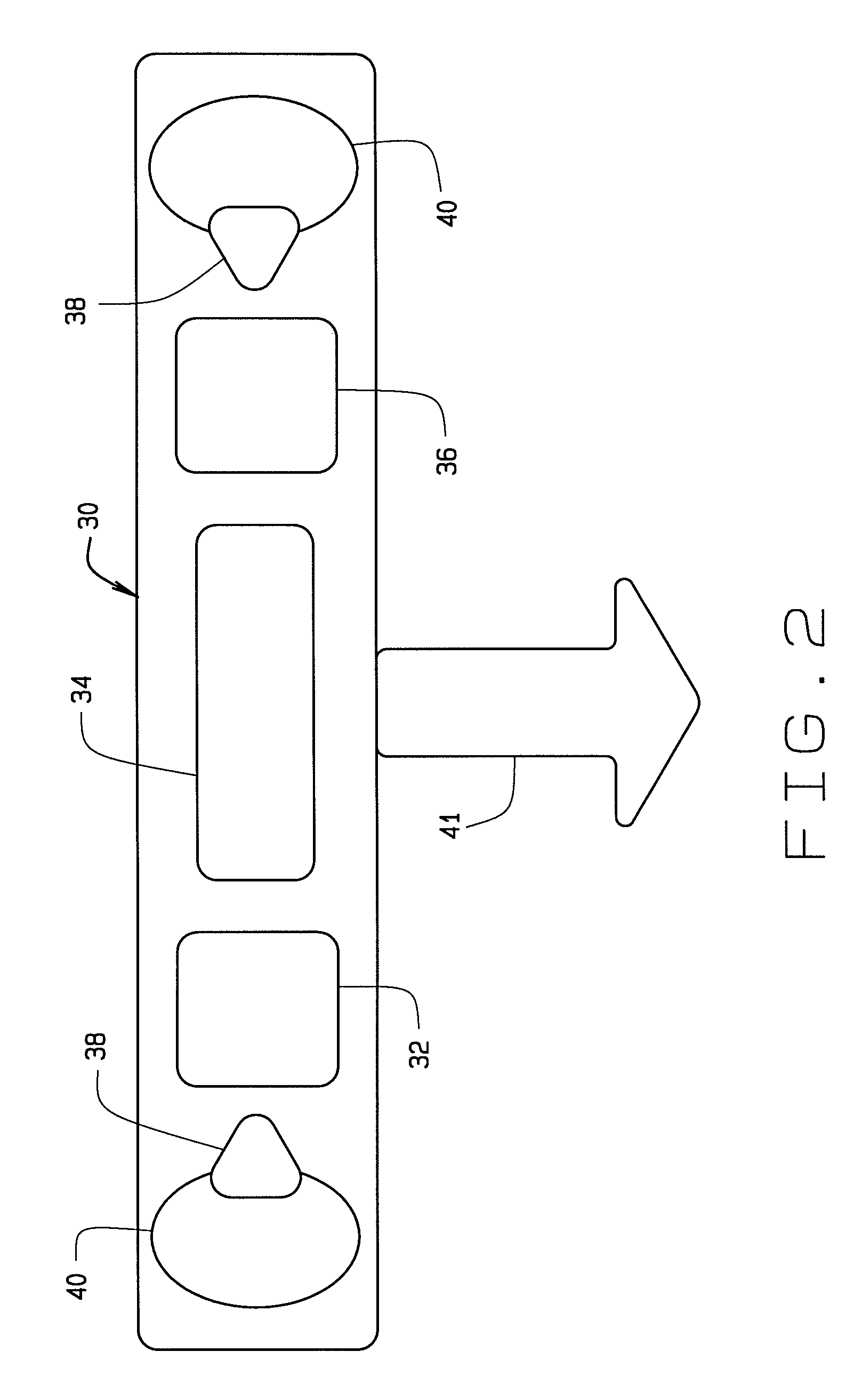Integrated Portable Anesthesia and Sedation Monitoring Apparatus
a monitoring apparatus and portable technology, applied in the field of integrated portable anesthesia and sedation monitoring apparatus, can solve the problems of amlr being very susceptible to signal noise, electrodes also recording background noise, and the risk of damage to the patient's central nervous system
- Summary
- Abstract
- Description
- Claims
- Application Information
AI Technical Summary
Benefits of technology
Problems solved by technology
Method used
Image
Examples
Embodiment Construction
[0029] The following detailed description illustrates the invention by way of example and not by way of limitation. The description enables one skilled in the art to make and use the invention, and describes several embodiments, adaptations, variations, alternatives, and uses of the invention, including what is presently believed to be the best mode of carrying out the invention.
[0030] The following definitions are used throughout this specification for describing Sedation and Anesthesia according to the American Society of Anesthesiologists (Standards, Guidelines and Statements, 2004):
[0031]“Minimal Sedation” (Anxiolysis) is a drug-induced state during which patients respond normally to verbal commands. Although cognitive function and coordination may be impaired, ventilatory and cardiovascular functions are unaffected;
[0032]“Moderate Sedation / Analgesia” (Conscious Sedation) is a drug-induced depression of consciousness during which patients respond purposefully to verbal comman...
PUM
 Login to View More
Login to View More Abstract
Description
Claims
Application Information
 Login to View More
Login to View More - R&D
- Intellectual Property
- Life Sciences
- Materials
- Tech Scout
- Unparalleled Data Quality
- Higher Quality Content
- 60% Fewer Hallucinations
Browse by: Latest US Patents, China's latest patents, Technical Efficacy Thesaurus, Application Domain, Technology Topic, Popular Technical Reports.
© 2025 PatSnap. All rights reserved.Legal|Privacy policy|Modern Slavery Act Transparency Statement|Sitemap|About US| Contact US: help@patsnap.com



